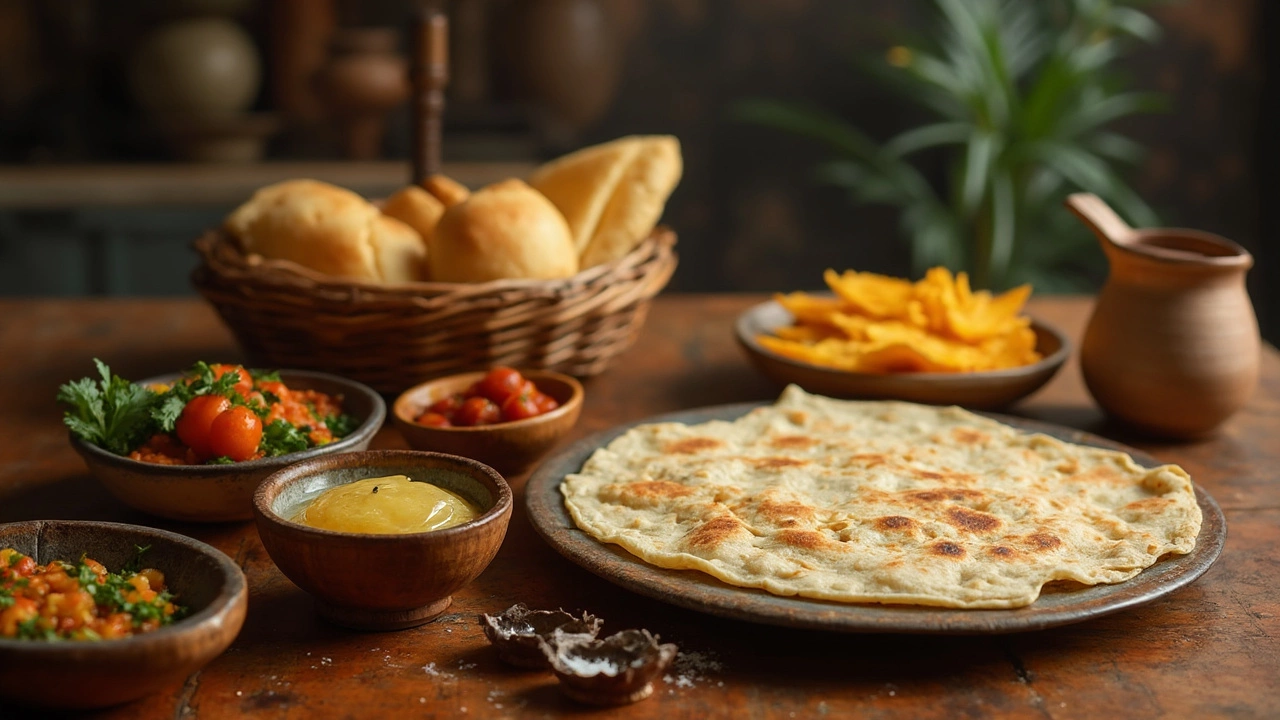Roti Calories Facts: How Many Calories Are in Your Indian Flatbread?
When talking about Roti Calories, the amount of energy measured in kilocalories that a typical Indian roti (whole‑wheat flatbread) provides per serving. Also known as chapati calorie count, it helps you judge how a staple fits into your daily intake.
Understanding the numbers starts with the bread itself. Roti is a thin, unleavened flatbread made from whole‑wheat flour, water, and sometimes a pinch of oil or baking soda. The basic recipe yields roughly 70‑80 kcal per 30‑gram piece, but the exact figure shifts with flour quality, added fat, and size. If you swap plain whole‑wheat flour for multigrain blends, the calorie content nudges up because of extra seeds and nuts. Likewise, a dash of oil can add 10‑15 kcal per roti. These variations illustrate the first semantic link: Roti calories depend on ingredients and preparation methods.
Next, look at the broader concept of Nutrition covers the balance of carbs, proteins, fats, vitamins, and minerals in a food item. Nutrition determines not just calorie count but also how those calories affect satiety and blood sugar. A typical roti delivers about 12‑14 g of carbs, 2‑3 g of protein, and 1 g of fiber. Adding lentil flour or chickpea flour boosts protein while keeping calories steady, creating a second semantic connection: Nutrition influences roti calorie quality. For anyone watching weight, replacing a portion of wheat with higher‑protein flour can keep total calories similar while improving muscle‑building potential.
Practical Ways to Manage Roti Calories
Here are three easy tweaks that let you keep the taste you love while trimming the calorie load. First, roll the dough thinner; a 5‑mm sheet cooks faster and uses less flour, shaving 5‑10 kcal per piece. Second, skip the oil entirely or use a spray instead of a spoonful; this cuts roughly 15 % of the calories without making the roti brittle. Third, serve roti alongside fiber‑rich veggies or dal; the added bulk makes you feel fuller, so you naturally eat fewer pieces. These tips create a third semantic triple: Managing portion size and ingredient choices enables lower roti calories.
Finally, remember that calorie counting is only one part of a healthy diet. Pairing roti with protein‑packed lentils or low‑fat yogurt balances the meal, delivering sustained energy. If you’re tracking macros, note that a standard roti contributes about 10 % of a 2,000‑kcal daily goal, leaving room for other nutrients. This final connection ties everything together: Roti calories fit into overall nutrition planning.
Armed with these facts, you can decide how many rotis fit your meals, experiment with flour blends, and use simple tricks to keep the calorie count in check. Below you’ll find a collection of articles that dig deeper into roti puffing, oil timing, baking soda hacks, and more—each one built on the calorie fundamentals we just covered.

Roti vs. Bread: Which Has Fewer Calories?
When it comes to a staple like bread or roti, knowing which one has fewer calories can make a difference in how you approach your diet. This article breaks down the calorie content in common servings of roti and bread, providing real-world insights and a side-by-side comparison. Find out how ghee or sabzi impacts the calorie count and learn practical tips for making healthier choices without sacrificing taste.